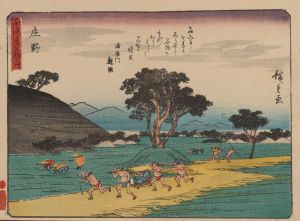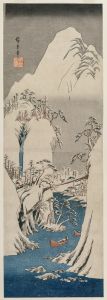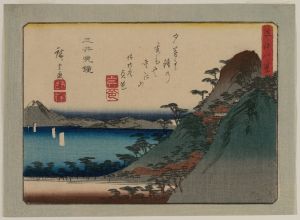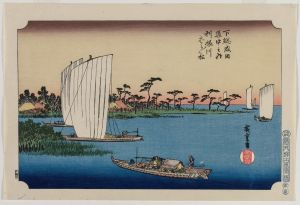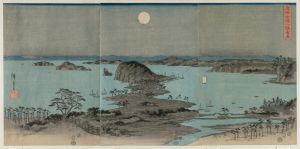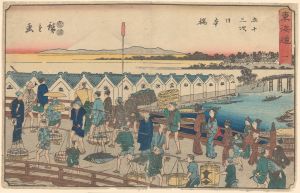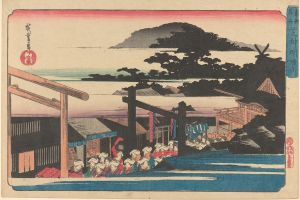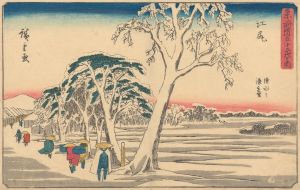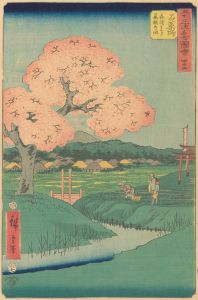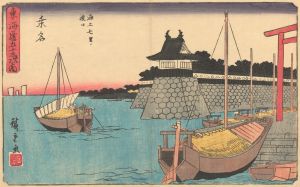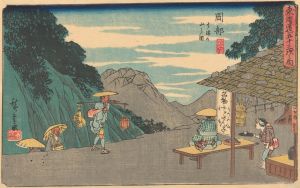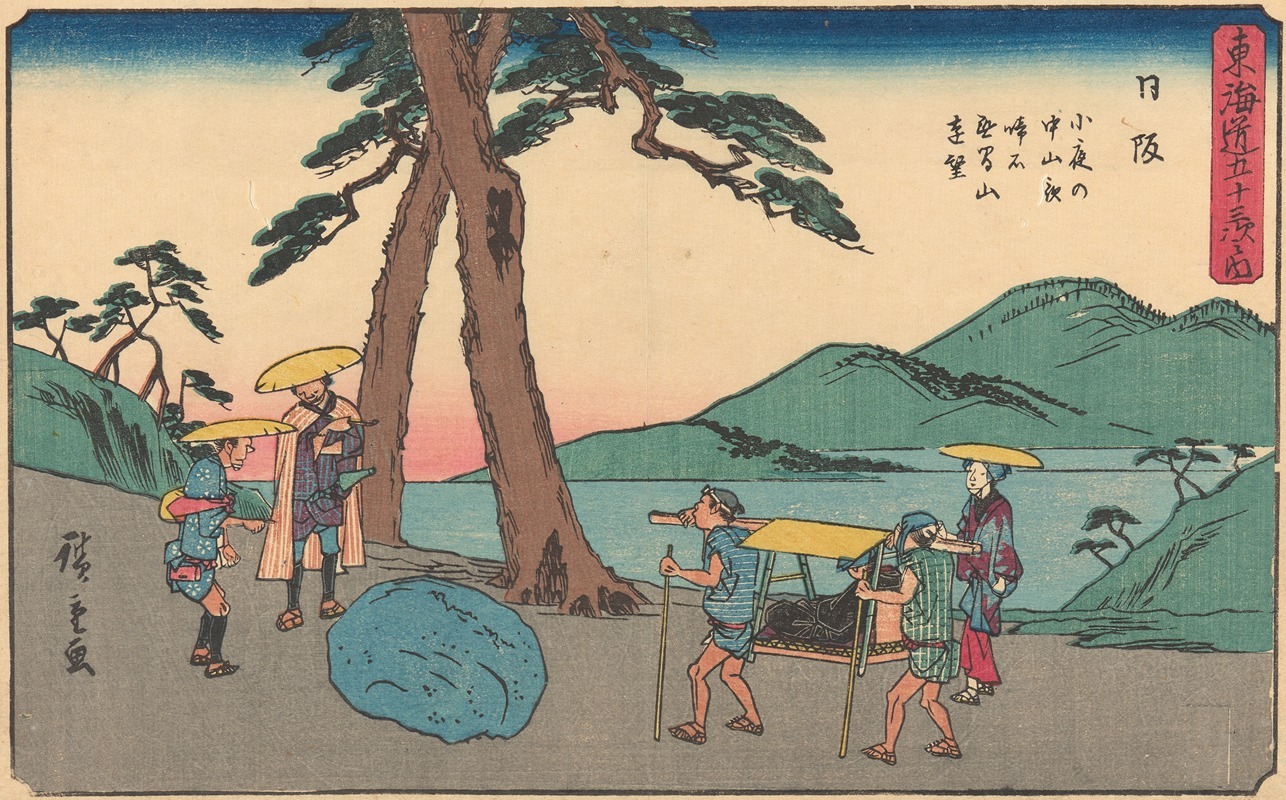
Nissaka
A hand-painted replica of Andō Hiroshige’s masterpiece Nissaka, meticulously crafted by professional artists to capture the true essence of the original. Each piece is created with museum-quality canvas and rare mineral pigments, carefully painted by experienced artists with delicate brushstrokes and rich, layered colors to perfectly recreate the texture of the original artwork. Unlike machine-printed reproductions, this hand-painted version brings the painting to life, infused with the artist’s emotions and skill in every stroke. Whether for personal collection or home decoration, it instantly elevates the artistic atmosphere of any space.
Andō Hiroshige, a renowned Japanese ukiyo-e artist of the Edo period, is celebrated for his landscape prints and his series "The Fifty-three Stations of the Tōkaidō." One of the prints from this series is "Nissaka," which captures the essence of the Nissaka station along the Tōkaidō road, a vital travel and trade route connecting Edo (modern-day Tokyo) with Kyoto.
The Tōkaidō road was one of the five major routes of the Edo period, established by the Tokugawa shogunate to facilitate communication and control across Japan. Hiroshige's series, created after his journey along the Tōkaidō in the early 1830s, offers a vivid portrayal of the various stations and the landscapes, people, and activities associated with them. "Nissaka" is the 25th station in the series and is particularly noted for its scenic beauty and the legendary "Night Weeping Stone" (yonaki-ishi).
Hiroshige's depiction of Nissaka is characterized by his masterful use of perspective and color, which brings the landscape to life. The print typically features a winding road leading through a mountainous terrain, with travelers depicted in traditional Edo-period attire. The composition often includes lush greenery and the distant silhouette of Mount Fuji, a recurring motif in Hiroshige's work that symbolizes both beauty and the spiritual essence of Japan.
The "Night Weeping Stone" is a significant element in the Nissaka print. According to local legend, the stone is said to weep at night, mourning the tragic death of a pregnant woman who was killed by bandits in the area. This story adds a layer of cultural and historical depth to the print, reflecting the folklore and beliefs of the time.
Hiroshige's work is renowned for its ability to convey the transient beauty of nature and the everyday life of people during the Edo period. His prints were not only artistic achievements but also served as travel guides and souvenirs for those journeying along the Tōkaidō. The popularity of "The Fifty-three Stations of the Tōkaidō" series helped to cement Hiroshige's reputation as one of the leading ukiyo-e artists of his time.
The "Nissaka" print, like many of Hiroshige's works, is characterized by its delicate lines, harmonious composition, and the use of bokashi (gradation of color), which adds depth and atmosphere to the scene. Hiroshige's innovative techniques and keen observation of nature and human activity have left a lasting impact on the art world, influencing not only Japanese artists but also Western artists, particularly the Impressionists.
Today, Hiroshige's "Nissaka" and the entire Tōkaidō series are celebrated for their artistic and historical significance. They provide a window into the Edo period's culture, landscape, and society, offering insights into the era's travel customs and the natural beauty of Japan. Hiroshige's ability to capture the spirit of the Tōkaidō road continues to resonate with audiences worldwide, making his work an enduring legacy in the world of art.





